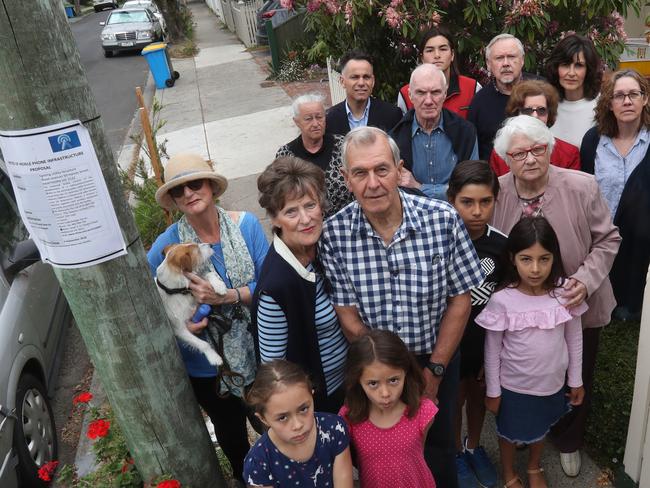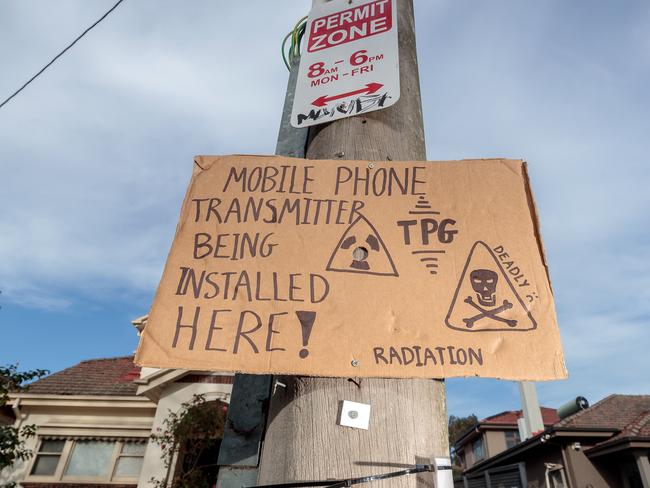Residents protest over fears about mobile phone base stations
RESIDENTS are fearful about the electromagnetic impact of dozens of new TPG mobile phone base station installations that are popping up in Melbourne’s suburban streets.

VIC News
Don't miss out on the headlines from VIC News. Followed categories will be added to My News.
RESIDENTS are concerned about the health impact of dozens of new TPG mobile phone base stations being erected in suburban streets across Melbourne.
A Hawthorn couple says one proposed base station would be just 4.7m from their home — yet TPG’s own advice is that base stations should not be close to “community-sensitive locations to minimise electromagnetic energy exposure to the public’’.
The company, which is merging with Vodafone to challenge the Telstra and Optus dominance of the mobile market, is rolling out hundreds of new base stations nationwide in preparation for the merger and the arrival of 5G technology.
TPG MOBILE WORKS PLAN MET WITH FIERCE BACKLASH
MEDICAL EXPERTS PLEAD FOR METRO TUNNEL OVERHAUL
VODAFONE, TGP VOW CONSUMERS WILL BE WINNERS OF MERGER

Roy Lilley and Betty Davis fear that one of many being installed in the City of Boroondara will be too close to their Haines St cottage for comfort.
Mr Lilley said inquiries they had made with TPG about the location and electromagnetic energy impact had been met with generic responses, and he was not convinced of safety.
“They never answer in simple terms. But there must be an alternative,” he said.
“The government has given these companies carte blanche to run roughshod over a community without taking on their concerns.’’
Other residents’ protests have emerged in Hawthorn and Malvern East in recent months.

Australian Communications Consumer Action Network chief executive Teresa Corbin said TPG should do more to consult with residents.
She believed many TPG base stations were being fitted on power poles on the street rather than on top of buildings, triggering the fears.
“No matter what the infrastructure, you should involve the community,’’ she said.
“They are required to tell you how much (electromagnetic emission) it is emitting and are required to tell you who they consulted about it.’’
The Australian Radiation Protection and Nuclear Safety Agency said mobile-phone base stations emitted low-level radio signals, and electromagnetic energy exposure in the Hawthorn street in question was well within guidelines.
Current global research indicated no established health effects from low exposure to radiofrequency electromagnetic energy, it said.

But Ms Corbin said that the long-term health impacts were not conclusive. “We all want better coverage, but not at the cost of our health,’’ she said.
MP John Pesutto, who represents Hawthorn, said: “I’m dismayed TPG is not even responding to many residents who are concerned about the close proximity of these installations to their homes.”
TPG spokesman Redentor Tandog said two alternative sites in Hawthorn were being considered. “We understand safety is an important issue, that is why it is tightly regulated,’’ he said. “TPG has to, and does, operate within standards set by government authorities.
“Ultimately, we are aiming to enhance service and connectivity for the community in a way that is safe and lawful.’’
TPG now has more than 700,000 internet subscribers — only behind Telstra — but its 360,000 mobile customer base is a fraction of its rivals’.



